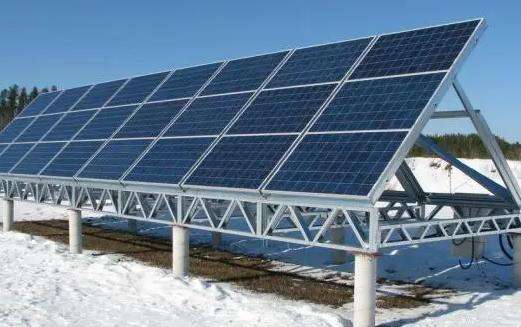In the protection of generator relays, in order to uniformly manage the protection of non-electrical quantities, according to the characteristics of different units, a launching leg pressure plate is uniformly used for thermal protection devices to enter and eliminate collectively thermal energy. protection. . In order to facilitate operation and management, in terms of thermal engineering, there should also be different thermal protection switches, so that response issues can be handled separately in actual production.
Generator protection function and its principle
1. Basic concepts
The safe operation of the generator plays a decisive role in ensuring the normal operation and power quality of the generator. the electrical system. At the same time, the generator itself is also a very valuable electrical component. Therefore, a protection deviceRelay action with perfect performance should be installed to handle various faults and abnormal operating conditions.
Types of faults and abnormal operating conditions
Types of faults include phase-to-phase short circuit of the stator winding, gate-to-gate short circuit of one phase of the stator winding, a single short circuit phase grounding of the stator winding, grounding of the rotor winding at one point or two points, the excitation current of the rotor excitation circuit disappears
Abnormal operating conditions mainly include: stator winding overcurrent caused by external short circuit; symmetrical phase overload caused by a load exceeding the rated capacity of the generator; generator overcurrent and negative sequence overload caused by external asymmetric short circuit or asymmetric load; winding overvoltagestator ent caused by sudden overload of the rotor winding caused by excitation circuit failure or high life; excitement time; Reverse work of generator caused by sudden closing of turbine main valve, etc.
2. Possible faults of the generator and corresponding protection devices
Short circuit between the stator windings will cause a huge short circuit current and seriously burn the generator. It must be installed. Install instantaneous longitudinal differential protection.
Inter-turn short circuit of the stator winding. The inter-turn short circuit of the stator winding is divided into: inter-turn short circuit of the same branch and inter-turn short circuit of the same and different. branches, which will also produce large short circuit current and burn the power generation machine, it is necessary to ininstall special protection against short circuits between the instantaneous turns.
Single-phase grounding of the stator winding Single-phase grounding of the stator winding is a fault that can occur in generators. Usually the winding is shorted to the iron core due to insulation damage. Although the instantaneous current of this fault is not large, the grounding current will cause arc burns on the iron core and destroy the winding insulation, which may develop. a short circuit in turn or a short circuit between phases. Therefore, 100% earth protection of the stator windings, which sensitively reflects earth faults at any point on all windings, must be installed.
The generator rotor winding is grounded at one point and two points. Although the rotor winding is brought to theground at a point, this has no effect on the operation of the generator. However, if another point is grounded, part. of the rotor winding will be short-circuited, causing an unbalanced magnetic potential. This will cause severe vibration of the unit, leading to serious consequences. Therefore, it is necessary to simultaneously install one-point grounding protection and two-point grounding protection of the rotor winding.
Loss of generator excitation. Generator de-excitation is divided into: complete loss of excitation and partial loss of excitation. This is one of the common faults of generators. De-energization failure is not only harmful to the generator, it causes damage and has a serious impact on the safety of the system, so protection against loss of excitation should be installed.
Damage caused by an abnormal operating state of the generatorator are not as serious as a generator failure, but they endanger the normal operation of the generator, especially since over time this can turn into a failure. Therefore, proper protection must be installed to prevent problems before they arise.
When the stator winding load operates asymmetrically, reverse current may occur, which may cause the motor rotor surface to overheat. The XU is equipped with protection against asymmetric loading of the stator winding (protection against overheating of the rotor surface).
If the stator winding is symmetrically overloaded, install symmetrical overload protection (usually using inverse-time characteristics).
The rotor winding is overloaded and the rotor winding overload protection is installed.
Function generatorsrunning in parallel may close the main gas valve due to the protection action of the generator and other reasons, resulting in reverse power operation, causing violent friction between the turbine blades and the turbine gases. Residual exhaust, overheating and damage to the turbine, therefore it is necessary to install reverse power protection.
In order to prevent overexcitation from causing heat and burning the iron core, overexcitation protection must be installed.
The generator may operate offset due to system oscillation, endangering the safety of the generator and offset protection should be installed.
Other protections: stator winding overvoltage, low frequency operation, out of phase operation and thermal protection directly related to generator operation. Water-cooled generators must bealso be equipped with protection against water cuts. , etc.
In addition, generator backup protection should also be installed, such as current, voltage, impedance protection, etc.
3. Generator protection principle
1. Longitudinal differential protection against phase-phase short circuits of the generator
The basic principle of longitudinal differential protection of the generator is to compare the amplitude and phase of the current on both sides of the generator, this reflects the short circuit fault between phases of the generator and its conductor wires.
2. Generator differential protection














